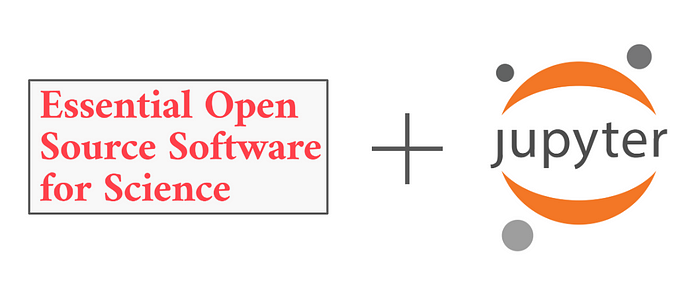The Jupyter Contributor In Residence, update 1
This year Jupyter was awarded a one-year “Essential Open Source Software for Science” grant from the Chan Zuckerberg Initiative, which we are using to bring on our first “Contributor in Residence” (many thanks, CZI ❤). This is a short report back from Jupyter’s first “Contributor in Residence”, Georgiana Dolocan. We are now about one third of the way through her tenure as CIR. Editor’s note: Georgiana has also made all of her own GIFs, because she’s just awesome like that ;-)

The JupyterHub and Binder Contributor in Residence. The first keepalive message.
At the end of last year, I found out that the CZI grant (so nicely put together by Chris Holdgraf), was accepted. I was very happy to have gotten the chance to continue working alongside an amazing community that I grew very fond of from day one that I started contributing.
Plan 1.0

Being the first project of its kind, we had millions of ideas about what the Contributor in Residence (CIR) project should be about. We discussed and converged towards a common plan, then we decided to continuously iterate once we got some real life feedback.
See this GitHub issue with the end result of the brainstorming, and with various milestones set in place. In short, the purpose of the CIR is to work on the little day-to-day tasks that occur across a project (respond to questions, review PRs, fix bugs, write documentation, maintain infrastructure), nothing fancy, no big projects.
The biggest little achievements
Among the little day-to-day tasks, there are a few achievements that are more noticeable and worthwhile to mention, that will potentially have a bigger impact than others.
🚩 The first blog post about The-Littlest-JupyterHub is out
The superheroes and the magic wand is the first blog post about TLJH on the Jupyter Blog. It first started as a technical blog post but while writing and constantly relating to TLJH as having superpowers to explain how it works, it turned rapidly into a superhero story.
TLJH is an important project in the Jupyter ecosystem and one that I care about a lot, so stay tuned as there are more blog posts to come about it, and although technical this time, I won’t restrain myself from talking about its superpowers.
🚩 The TLJH CI tests were refactored and an upgrade test was added
Are you familiar with that feeling when a pull request looks OK, it passes all tests and all the bots are happy, so you hit that merge button? Yet, soon after, the unexpected happens and bug reports start showing up. 🙈
Even though you manage to find the issue and solve it, one question remains: “Why did the checks pass?” The answer isn’t easy to hear: “The tests need to be improved”.
TLJH operates on a “rolling release” model, where people just install from master, so it’s very important to have strong tests. However, our issue wasn’t exactly with the tests themselves, but rather our CI didn’t match the production installation workflow, and that small difference between the workflows left TLJH in an uninstallable state. Merging that PR in the first place along with finding the divergence point was the key to solve the problem.
Bonus point: whenever someone wants to upgrade TLJH, they do it by running the installer again. Thus, the changes we’re adding by merging a PR, don’t just need to pass the tests, but also they must not break the upgrade process. So, we also added an upgrade test to our CI to solve any potential future upgrade problems.
🚩 Three repositories in the JupyterHub organization are now being watched by a support bot
The Jupyter community currently uses GitHub, Gitter and Discourse (the newest of them) to connect to one another. Having three communication channels might be confusing if there isn’t any clear distinction between them in terms of their scope. So we needed to find a way to organize our discussion to make the contributing experience better for everyone (users, core developers, and everyone in between).
The Discourse forum was already the place where most of our general discussions happened. So why not make this place even more popular and encourage everybody to share their ideas and questions there? This way, the forum becomes the place where we can help and inspire each-other, and GitHub issues are where we talk about cool new features, find bugs, and figure out how to solve the issues.
The support bot will help spread the word about the forum and will make the transition easier. Currently, it is plugged into the jupyterhub, binderhub and tljh repositories and will act each time the “support” label is added to a GitHub issue that should be on Discourse.
We kindly encourage everybody to use Discourse to start or participate in awesome discussions or ask questions of any kind. A great place to start is the Introduce yourself thread where you can just stop by and say “Hi”.
Struggles and solutions
Working on little tasks sounds simpler and easier than starting a big, complex project from scratch. Well, this is not entirely true… Those small tasks are happening around big projects that are used by a lot of people and are constantly evolving. So, even a small, not very complicated task, can be hard when you’re still figuring out the “hows” and “wheres” of a project.

Struggle: distributing focus across multiple repositories and issues
When working on a bigger project, I used to switch between tasks as a means to unwind when running out of ideas and things seemed impossible. I guess one could call this multitasking. However, switching between tasks of different projects that you know little about is challenging enough to cause stress, resuscitate that impostor syndrome, and ultimately turn into burnout.
Solution: Although I don’t have a solution to this and I’m still having troubles mastering this skill, I find inspiration and hope among the people in the Jupyter community. Even if maintaining lots of projects at once, they manage to successfully juggle between tasks, sometimes even when this isn’t their main job, so they deserve a huge shout out ❤️
Struggle: keeping track of little things
The difference between working on a big project and solving small tasks here and there (besides the obvious size distinction) is that solving smaller tasks makes you prone to loosing a sense of progress. Though not a project in the traditional way, the CIR is a concept that would be worth extending if successful, so evaluating its progress is a must and can help determine and improve those weak points — and why not — even point out when it’s time to stop. But keeping track of little things is tricky.
Solution: GitHub issues, comments or PRs can automatically be retrieved through GitHub’s API (Chris Holdgraf has a great tool for this called github-activity). However, to get a sense of accomplishment and progress at the end of the day, I tried to keep my own list of todos and tasks done. I experimented with two approaches in this sense: keeping a HackMD “journal” and creating a GitHub project. After these three months I think I like the GitHub project better because it allows me to keep a todo list with small enhancements I’d like to work when that notification bell doesn’t ring that often and it’s less copy and pasting links.
Struggle: getting out of the comfort zone

Implementing that cool new feature or solving that annoying bug when feeling adventurous are part of the fun of software development. However, being a CIR is more than writing code. Things like writing blog posts and reviewing PRs are core responsibilities as well. But these are all new territory, so much that, I think up until last year I could count on the fingers of one hand the number of blog posts I had written or the number of PRs I had reviewed. So, the only thing left to say is “Hello new challenges! Farewell comfort zone 👋”.
Solution: Accept the challenge and practice every day until things don’t feel that scary anymore. Patience is key.
Plan 2.0
Version 1 of the plan was solid enough not to have to modify it completely.
So, things like tracking down the bugs and failing tests won’t be halted.
Instead, during these next two months, the plan will only suffer some little focus-related adjustments.
Specifically, I want to focus more on:
- Getting more familiar with some of the repositories that didn’t get enough attention during the first phase of the project (zero-to-jupyterhub-k8s, jupyterhub-deploy-docker, binderhub, dockerspawner, kubespawner, repo2docker), potentially improving the documentation along the way. No more dipping the toes in the water, just dive in 🌊.
- Writing more blog posts about the superpowers of TLJH.
- Have more bots 🤖 helping the community.
In the process, I hope I can check the boxes for some of the items on my “learn and improve” wish-list:
- technical writing
- Kubernetes
- UI/UX
- courage
Stay tuned, because the next blog post about the JupyterHub and Binder Contributor in Residence adventures should be out in two months time.

